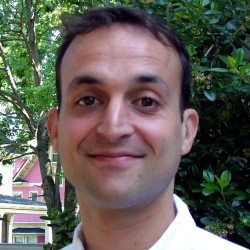
The world has changed. Computers are everywhere. Many children start using computers at a young age. Yet, how we teach our kids has barely changed.
Let’s say we were going to start over. Let’s redesign how we teach our kids. If we assume that everyone has a computer, how would math education change?
Conrad Wolfram gave an interesting TED talk recently, "Teaching Kids Real Math with Computers", that explores how math education could change now that we have calculating devices at our fingertips.
Some excerpts:
What is math? What do we mean when we say we’re doing math, or educating people to do math?
I think it’s about four steps, roughly speaking, starting with posing the right question. What is it that we want to ask? What is it we’re trying to find out here?
The next thing is take that problem and turn it from a real-world problem into a math problem.
Once you’ve done that, then there’s the computation step.
And then finally, turn it back to the real world. Did it answer the question?
The crazy thing right now, in math education, we’re spending about perhaps 80 percent of the time teaching people to do step three [the computation step] by hand. Yet, that’s the one step computers can do better than any human after years of practice. Instead, we ought to be using computers to do step three and using the students to spend much more effort on learning how to do steps one, two and four–conceptualizing problems [and] applying them.
Math is not equal to calculating … [Years ago] calculating [by hand] was typically the limiting step, and not often it isn’t … Calculating … [is a] chore … It’s a means to an end, not an end in itself … It’s the thing you’d like to avoid if you can, like to get a machine to do … Computers allow us to do that.
What I really think we gain from this is students getting intuition and experience in far greater quantities than they’ve ever got before. And experience of harder problems–being able to play with the math, interact with it, feel it. We want people who can feel the math instinctively. That’s what computers allow us to do.
We can reorder [the curriculum] by how difficult it is to understand the concepts, however hard the calculating … Calculus has traditionally been taught very late … [because] it’s … hard doing the calculations … [but] many of the concepts are amenable to a much younger age group … [such as] talking about what happens when you increase the number of sides of a polygon to a very large number …. I want to see a completely renewed, changed math curriculum built from the ground up, based on computers being being there.



Join the Discussion (0)
Become a Member or Sign In to Post a Comment